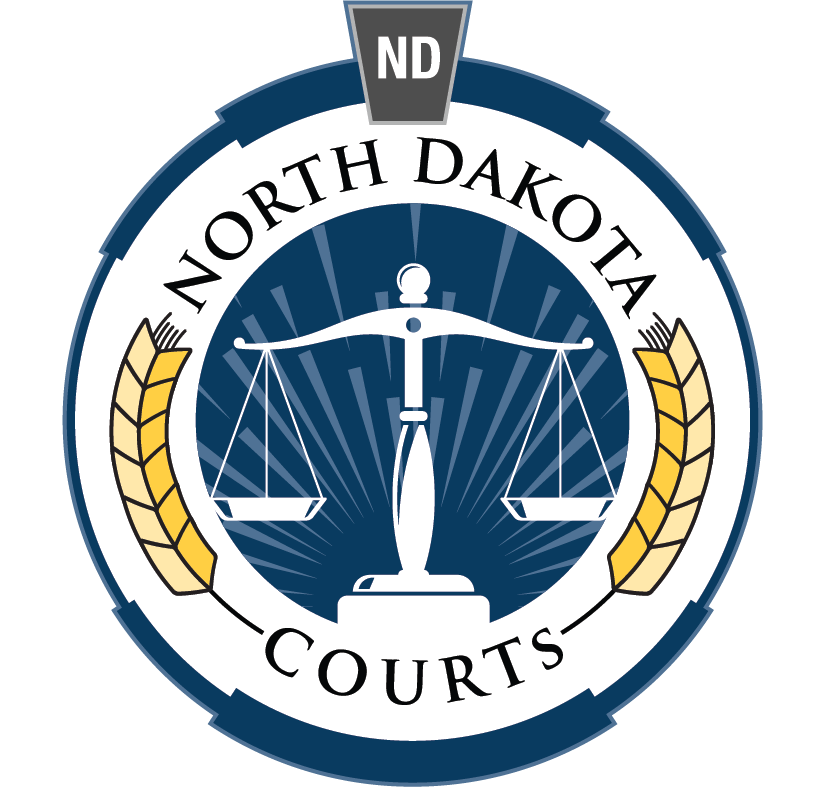RULE 1.16 DECLINING OR TERMINATING REPRESENTATION
Effective Date: 8/1/2025
(a) A lawyer shall inquire into and assess the facts and circumstances of each representation to determine whether the lawyer may accept or continue the representation. Except as stated in paragraph (c), a lawyer shall not represent a client or, where representation has commenced, shall seek to withdraw from the representation of a client if:
(1) the lawyer reasonably believes that the representation will result in violation of these Rules or other law;
(2) the lawyer's physical or mental condition materially impairs the lawyer's ability to represent the client;
(3) the lawyer has offered material evidence in the testimony of the client and has come to know of its falsity and the client has refused to consent to disclosure of its false character to the tribunal;
(4) the lawyer is discharged; or
(5) the client or prospective client seeks to use or persists in using the lawyer’s services to commit or further a crime or fraud, despite the lawyer’s discussion pursuant to Rules 1.2(d) and 1.4(a)(5) regarding the limitations on the lawyer assisting with the proposed conduct.
(b) Except as stated in paragraph (c), a lawyer may withdraw from representing a client if:
(1) withdrawal can be accomplished without material adverse effect on the interests of the client;
(2) the client persists in a course of action involving the lawyer's services that the lawyer reasonably believes is criminal or fraudulent;
(3) the client has used the lawyer's services to perpetrate a crime or fraud;
(4) a client insists upon pursuing objectives or means that the lawyer considers repugnant or with which the lawyer has a fundamental disagreement;
(5) the client fails substantially to fulfill an obligation to the lawyer regarding the lawyer's services and has been given reasonable warning that the lawyer will withdraw unless the obligation is fulfilled;
(6) the representation will result in an unreasonable financial burden on the lawyer or has been rendered unreasonably difficult by the client; or
(7) other good cause for withdrawal exists.
(c) When ordered to do so by a tribunal, a lawyer shall continue representation notwithstanding good cause for terminating the representation.
(d) Where the lawyer has sought to withdraw in accordance with paragraph (a)(3) and withdrawal is not permitted, the lawyer may continue the representation without disclosure of the client's false testimony; such continuation alone is not a violation of these Rules.
(e) Upon termination of representation, a lawyer shall take steps to the extent reasonably practicable to protect a client's interests, such as giving reasonable notice to the client, allowing time for employment of other counsel, surrendering papers and property to which the client is entitled and refunding any advance payment of fee or expense that has not been earned or incurred. The lawyer may retain papers relating to the client only to the extent permitted by Rule 1.19.
[1] Paragraph (a) imposes an obligation on a lawyer to inquire into and assess the facts and circumstances of the representation before accepting it. The obligation imposed by Paragraph (a) continues throughout the representation. A change in the facts and circumstances relating to the representation may trigger a lawyer’s need to make further inquiry and assessment. For example, a client traditionally uses a lawyer to acquire local real estate through the use of domestic limited liability companies, with financing from a local bank. The same client then asks the lawyer to create a multi-tier corporate structure, formed in another state to acquire property in a third jurisdiction, and requests to route the transaction’s funding through the lawyer’s trust account. Another example is when, during the course of a representation, a new party is named or a new entity becomes involved. A lawyer should not accept representation in a matter unless it can be performed competently, promptly, without improper conflict of interest and to completion. Ordinarily, a representation in a matter is completed when the agreed-upon assistance has been concluded. See Rules 1.1, 1.2(c) and 6.5. See also Rule 1.3, Comment [4].
Mandatory Withdrawal
[2] A lawyer ordinarily must decline or seek to withdraw from representation if the client demands that the lawyer engage in conduct that is illegal or violates these Rules or other law. The lawyer is not obliged to decline or withdraw simply because the client suggests such a course of conduct; a client may make such a suggestion in the hope that a lawyer will not be constrained by a professional obligation. Under paragraph (a)(5), the lawyer’s inquiry into and assessment of the facts and circumstances will be informed by the risk that the client or prospective client seeks to use or persists in using the lawyer’s services to commit or further a crime or fraud. This analysis means that the required level of a lawyer’s inquiry and assessment will vary for each client or prospective client, depending on the nature of the risk posed by each situation. Factors to be considered in determining the level of risk may include: (i) the identity of the client, such as whether the client is a natural person or an entity and, if an entity, the beneficial owners of that entity, (ii) the lawyer’s experience and familiarity with the client, (iii) the nature of the requested legal services, (iv) the relevant jurisdictions involved in the representation (for example, whether a jurisdiction is considered at high risk for money laundering or terrorist financing), and (v) the identities of those depositing into or receiving funds from the lawyer’s client trust account, or any other accounts in which client funds are held. For further guidance assessing risk, see, e.g., as amended or updated, Financial Action Task Force Guidance for a Risk-Based Approach for Legal Professionals, the ABA Voluntary Good Practices Guidance for Lawyers to Detect and Combat Money Laundering and Terrorist Financing, A Lawyer’s Guide to Detecting and Preventing Money Laundering (a collaborative publication of the International Bar Association, the American Bar Association and the Council of Bars and Law Societies of Europe), the Organization for Economic Cooperation and Development (OECD) Due Diligence Guidance for Responsible Business Conduct, and the U.S. Department of Treasury Specially Designated Nationals and Blocked Persons List.
[3] Rule 3.3 and this Rule require a lawyer to seek to withdraw from representation of a client upon learning that the client offered false evidence if the lawyer is unable to persuade the client to disclose its false character immediately to the tribunal. If withdrawal is denied, the lawyer must continue the representation notwithstanding paragraph (a)(3) of this Rule. In the continued representation, the lawyer remains bound by the obligation of candor under Rule 3.3.
[4] When a lawyer has appeared on behalf of a client, withdrawal ordinarily requires approval of the tribunal. Difficulty may be encountered if withdrawal is based on the client's demand that the lawyer engage in unprofessional conduct. The court may request an explanation for the withdrawal, while the lawyer may be bound to keep confidential the facts that would constitute such an explanation. The lawyer's statements that professional considerations require termination of the representation ordinarily should be accepted as sufficient. Lawyers should be mindful of their obligations to both clients and the court under Rules 1.6 and 3.3.
Discharge
[5] A client has a right to discharge a lawyer at any time, with or without cause, subject to liability for payment for the lawyer's services. Where future dispute about the withdrawal may be anticipated, it may be advisable to prepare a written statement reciting the circumstances.
[6] Whether a client can discharge appointed counsel may depend on applicable law. A client seeking to do so should be given a full explanation of the consequences. These consequences may include a decision by the appointing authority that appointment of successor counsel is unjustified, thus requiring the client to appear pro se.
[7] If the client is a minor or is of limited capacity, the client may lack the legal capacity to discharge the lawyer, and in any event the discharge may be seriously adverse to the client's interest. The lawyer should make special effort to help the client consider the consequences and may take reasonably necessary protective action as provided in Rule 1.14.
Optional Withdrawal
[8] A lawyer may withdraw from representation in some circumstances. The lawyer has the option to withdraw if it can be accomplished without material adverse effect on the client's interests. Withdrawal is also justified if the client persists in a course of action that the lawyer reasonably believes is criminal or fraudulent, for a lawyer is not required to be associated with such conduct even if the lawyer does not further it. Withdrawal is also permitted if the lawyer's services were misused in the past even if that would materially prejudice the client. The lawyer may also withdraw where the client insists on taking action that the lawyer considers repugnant or with which the lawyer has a fundamental disagreement.
[9] A lawyer may withdraw if the client refuses to abide by the terms of an agreement relating to the representation, such as an agreement concerning fees or court costs or an agreement limiting the objectives of the representation.
Assisting the Client Upon Withdrawal
[10] Even if the lawyer has been unfairly discharged by the client, a lawyer must take all reasonable steps to mitigate the consequences to the client. With regard to the disposition of the client's files, papers or property, the lawyer should follow Rule 1.19.
Reference: Minutes of the Professional Conduct Subcommittee of the Attorney Standards Committee on 04/26/85, 08/23/85, 09/20/85, and 01/10/86; Minutes of the Joint Committee on Attorney Standards on 6/8/99, 9/16/99, 11/19/99, 3/23/00, 6/13/00, 9/15/00, 11/17/00, 6/12/01, 02/27/04, 03/18/05, 06/14/05; 11/17/23; 8/30/24.

